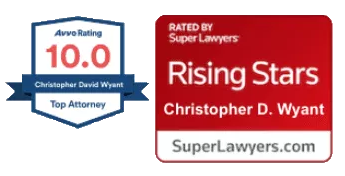With the rise of autonomous features in vehicles, determining fault in Tesla accident and other “self-driving” incidents becomes a nuanced dance between human error, machine malfunction, and legal liability. Whether you’re a victim seeking justice or a defendant facing allegations, Wyant Law is here to advocate for your rights and ensure that accountability is appropriately assigned.
What Makes Teslas Unique?
Among the many innovations that have emerged from the automotive industry, Tesla’s Autopilot feature stands out — revolutionizing the way we perceive driving and vehicle autonomy.
At the heart of Tesla’s Autopilot is an intricate fusion of hardware and software, apart from conventional driver-assistance systems.
Deep Learning Neural Networks
Tesla’s Autopilot relies on advanced artificial intelligence algorithms, specifically deep learning neural networks, to process vast amounts of data from sensors and cameras in real-time. This enables the vehicle to perceive its surroundings with unprecedented accuracy, allowing for adaptive and responsive driving behavior.
Continuous Over-the-Air Updates
Unlike traditional automotive software, Tesla’s Autopilot receives regular over-the-air updates, akin to smartphone software updates. This means that Tesla vehicles are constantly evolving.
“Full Self-Driving” Capability
While not fully autonomous yet, Tesla’s Autopilot feature represents a significant step towards full self-driving capability. With features like Navigate on Autopilot, which handles lane changes and highway interchanges, Tesla vehicles are capable of semi-autonomous driving in certain conditions, with the potential for fully autonomous operation in the future.
Driver Monitoring System
Tesla’s Autopilot incorporates a sophisticated driver monitoring system to ensure driver engagement and readiness to take control when necessary. Through a combination of sensors and cameras, the system monitors the driver’s attention level and alerts them if intervention is required, enhancing overall safety.
Fault and Liability in a Tesla Accident
As technology advances, so too does the landscape of personal injury law, as traditional legal principles must adapt to accommodate innovations like Tesla’s self-driving mode. Understanding the implications of this cutting-edge technology on fault and liability in car accidents is crucial for both legal professionals and the public.
Defining Fault in Car Accidents
In Indiana, fault in car accidents is primarily determined by negligence. Negligence, in the context of car accidents, refers to the failure to exercise reasonable care while driving. Reasonable care encompasses actions that a prudent person would take under similar circumstances to avoid causing harm to others. Common examples of negligent behavior on the road include speeding, running red lights, distracted driving, and failing to yield the right-of-way.
Indiana follows a modified comparative fault system, meaning that fault is assigned to each party involved in an accident, and damages are apportioned accordingly. Under this system, an injured party can recover damages as long as their degree of fault does not exceed 51%. However, if their fault exceeds 50%, they are barred from recovering any damages.
Defining Liability in Car Accidents
Liability in car accidents refers to legal responsibility for the damages resulting from the accident. In Indiana, liability is typically based on the concept of negligence discussed earlier. The party found to be at fault for causing the accident is liable for the resulting injuries and property damage.
Tesla’s Self-Driving Mode and the Legal Landscape
Tesla’s self-driving mode introduces a new dimension to the determination of fault and liability in car accidents. When a Tesla vehicle operates in self-driving mode, responsibility for controlling the vehicle shifts from the driver to the vehicle’s autonomous system. This raises pertinent questions: Who is at fault when a Tesla in self-driving mode is involved in an accident? Is it the driver, the manufacturer, or both?
The answer to these questions is complex and largely depends on the specific circumstances of the accident. If the accident occurs due to a malfunction or defect in Tesla’s autonomous system, the manufacturer may bear liability for the resulting damages under product liability laws. However, if the accident occurs due to the driver’s failure to properly engage or monitor the self-driving mode, the driver may be deemed negligent and thus liable for the accident.
Attorney Christopher Wyant is here to help you. With over 17 years of experience, Attorney Wyant has spent his entire legal career representing individuals who have been injured or killed as a result of the carelessness of others. With trial experience in over 20 jury trials, he has handled cases involving wrongful death and personal injury arising out of automobile crashes, premises liability, slips and falls, dog attacks, and civil rights violations.
Determining Fault and Liability in a Tesla Accident
When examining accidents involving Teslas in self-driving mode, pinpointing fault and liability is a complex process that hinges on a detailed analysis of multiple factors:
The first area of scrutiny is driver engagement. It’s essential to determine whether the driver was actively monitoring and correctly utilizing the autonomous mode according to Tesla’s specifications. Any deviation from these guidelines could suggest negligence on the part of the driver.
Another critical aspect is the integrity of Tesla’s autonomous system. If the accident was precipitated by a failure or flaw in the technology, the manufacturer might be held accountable for damages under product liability laws.
External influences, such as the condition of the road or the behavior of other drivers, also play a significant role. Evaluating these third-party factors is vital for a fair assignment of fault and liability.
Collecting evidence is another crucial step. This includes securing eyewitness accounts, conducting accident reconstruction analyses, and analyzing data from the vehicle’s onboard sensors. Such evidence is indispensable for reconstructing the event sequence leading to the accident.
The advent of Tesla’s self-driving technology offers significant potential to enhance road safety but also introduces intricate legal challenges in the realm of accidents involving autonomous vehicles. A nuanced understanding of concepts like negligence and liability is critical for securing just outcomes for those affected by such accidents.
Can I Bring a Tesla Accident Lawsuit?
If you are considering a lawsuit following a Tesla accident, it’s vital to grasp both the necessary elements for a successful claim and the immediate actions to take after the incident.
A Tesla accident lawsuit hinges on several key elements. First, the plaintiff must establish a ‘Duty of Care,’ indicating that the defendant had a responsibility to operate the vehicle safely, adhering to traffic laws and regulations. Next, there must be a ‘Breach of Duty,’ where the plaintiff demonstrates that the defendant failed to uphold this duty, possibly through reckless driving, speeding, or improper use of Tesla’s self-driving mode.
Further, ‘Causation’ needs to be proven. This means the plaintiff must link the defendant’s breach directly to the accident and the injuries incurred. Lastly, the plaintiff is required to show ‘Damages’—evidence of actual losses stemming from the accident. These losses could include physical injuries, property damage, medical bills, lost income, and pain and suffering. Understanding these elements and preparing accordingly can significantly impact the outcome of a Tesla accident lawsuit.
Steps to Take After a Tesla Accident
After being involved in a Tesla accident, it is critical to take certain steps to safeguard your rights and bolster a potential lawsuit. Initially, your utmost priority should be safety—ensure that you and others involved are secure. If feasible, move to a safer location and attend to any injuries by seeking medical help.
Next, contact the police to report the incident. The police report will serve as a crucial piece of evidence as it documents the details of the accident. It’s also important to exchange contact and insurance information with all parties involved, including the Tesla driver. Make a note of any witnesses’ names and contact details as well.
Documenting the scene is equally vital. Take comprehensive photos and videos of the scene, capturing vehicle damages, the road conditions, and any relevant traffic signs or signals. Such visual evidence is instrumental in establishing fault and liability.
Even if you feel unharmed, it’s advisable to undergo a medical evaluation. Some injuries might not manifest immediately but can deteriorate if not addressed promptly. Keep all documents related to the accident, such as medical records, repair estimates, and any communications with insurance companies, as these will support your claim for damages.
Consulting with an attorney experienced in handling Tesla-related accidents is wise. They can evaluate your case, navigate the legal intricacies, and advocate on your behalf to ensure you receive appropriate compensation for your injuries and losses.
Related Videos
How should I choose a car accident attorney for my claim?
How can I determine the value of my car accident case?
What Kinds of Damages May be Awarded in a Tesla Accident Suit?
Pursuing legal action after a Tesla accident is not only about holding the responsible party accountable, but also about seeking compensation for the damages incurred. Knowing the potential damages that may be awarded in a Tesla accident lawsuit empowers victims to understand their rights and pursue fair compensation for their losses.
Medical Expenses
One of the most significant categories of damages in a Tesla accident lawsuit is medical expenses. This includes compensation for past, current, and future medical bills related to injuries sustained in the accident. From emergency room visits and surgeries to rehabilitative therapy and ongoing medical care, victims deserve full reimbursement for the costs of their treatment.
Lost Wages and Diminished Earning Capacity
Tesla accidents can leave victims unable to work temporarily or permanently due to their injuries. As such, they may be entitled to compensation for lost wages and income during their recovery period. Additionally, if the injuries result in long-term or permanent disability that impacts the victim’s earning capacity, they may seek damages for the loss of future earnings.
Property Damage
In a Tesla accident, vehicles may sustain significant damage, requiring repairs or even replacement. Victims are entitled to compensation for the repair or replacement costs of their vehicle, as well as any personal property damaged in the accident, such as electronics or personal belongings.
Pain and Suffering
Pain and suffering damages encompass the physical and emotional distress experienced by the victim as a result of the accident and their injuries. This includes not only the immediate pain and discomfort but also the long-term effects on the victim’s quality of life, such as chronic pain, disability, and emotional trauma.
Loss of Consortium
In cases where the victim’s injuries impact their relationship with their spouse or family members, the spouse or family members may be entitled to damages for loss of consortium. This compensation aims to address the loss of companionship, support, and intimacy resulting from the victim’s injuries.
Punitive Damages
In certain cases involving egregious misconduct or recklessness on the part of the defendant, punitive damages may be awarded in addition to compensatory damages. Punitive damages are intended to punish the defendant and deter similar conduct in the future, rather than compensate the victim for specific losses.
Advocating for Accident Victims
At Wyant Law, we prioritize transparency in our approach to legal fees. For personal injury cases, we operate on a contingency fee basis. This means that you won’t owe us any legal fees unless we successfully secure compensation for you. By aligning our interests with yours, this arrangement ensures that we are fully committed to advocating for your rights throughout the legal process.
If you’ve been injured in a Tesla accident, Wyant Law is ready to offer the legal assistance you require. Reach out to us for a complimentary consultation, and allow our experienced team to navigate the complexities of your personal injury case. We’ll work diligently to safeguard your rights and obtain the compensation you are entitled to.




